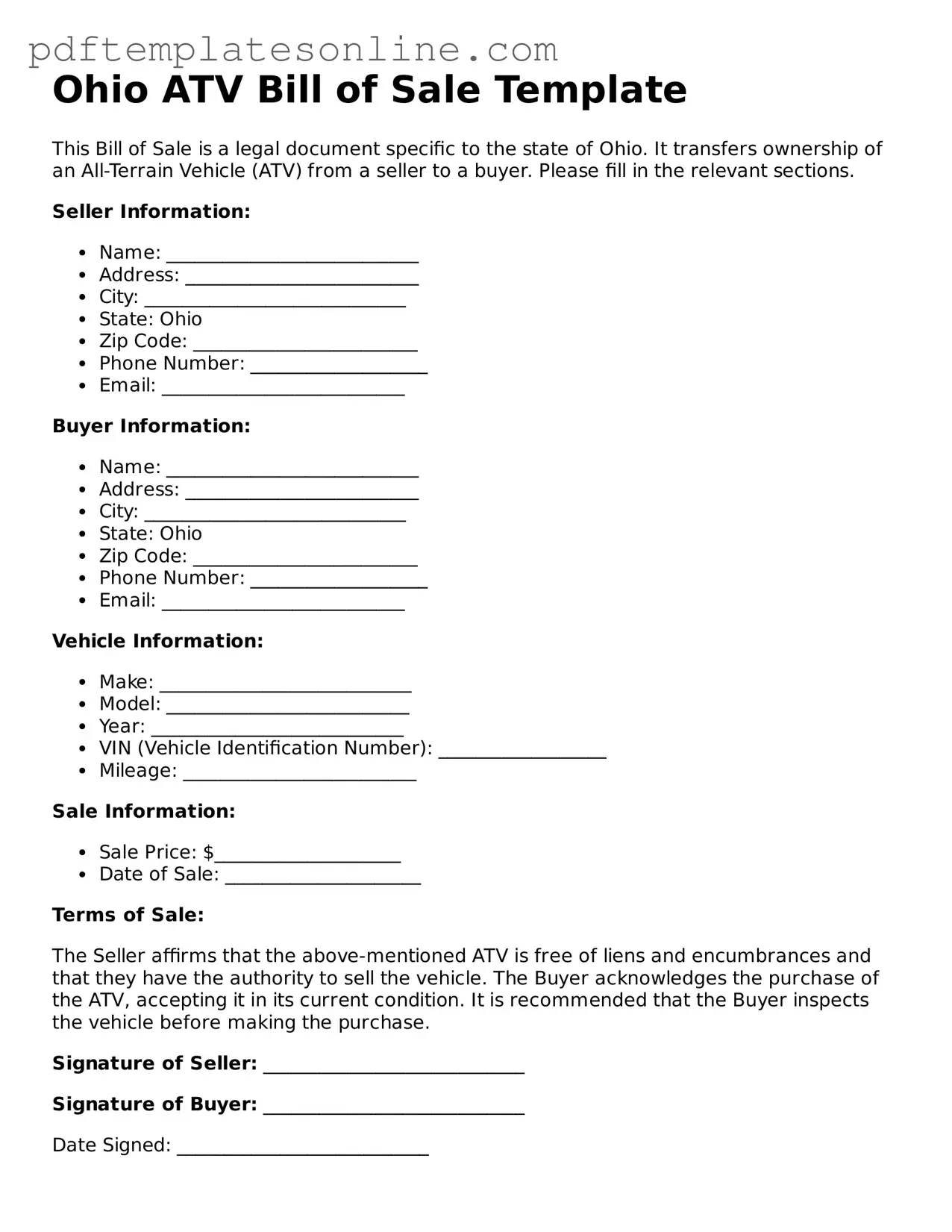Filling out the Ohio ATV Bill of Sale form can be straightforward, but many people make common mistakes that can lead to complications later. One frequent error is failing to include all required information. The form typically requires details such as the buyer's and seller's names, addresses, and signatures. Omitting any of this essential information can render the document invalid.
Another common mistake is not accurately describing the ATV being sold. It is crucial to provide the correct make, model, year, and Vehicle Identification Number (VIN). If any of these details are incorrect or missing, it may create issues with registration or future ownership disputes.
People often overlook the importance of the date of sale. This date is essential for both parties, as it marks the official transfer of ownership. Without a clear date, it can be difficult to establish when the transaction took place, which may lead to confusion or disputes down the line.
Additionally, some individuals forget to have the form signed by both the buyer and the seller. A Bill of Sale is not legally binding unless both parties have acknowledged the transaction by signing the document. Without these signatures, the sale may be challenged or deemed invalid.
Finally, many people neglect to keep a copy of the completed Bill of Sale for their records. This document serves as proof of the transaction and can be vital for future reference, especially if any issues arise regarding ownership or if the buyer needs to register the ATV. Keeping a copy ensures that both parties have access to the details of the sale.
